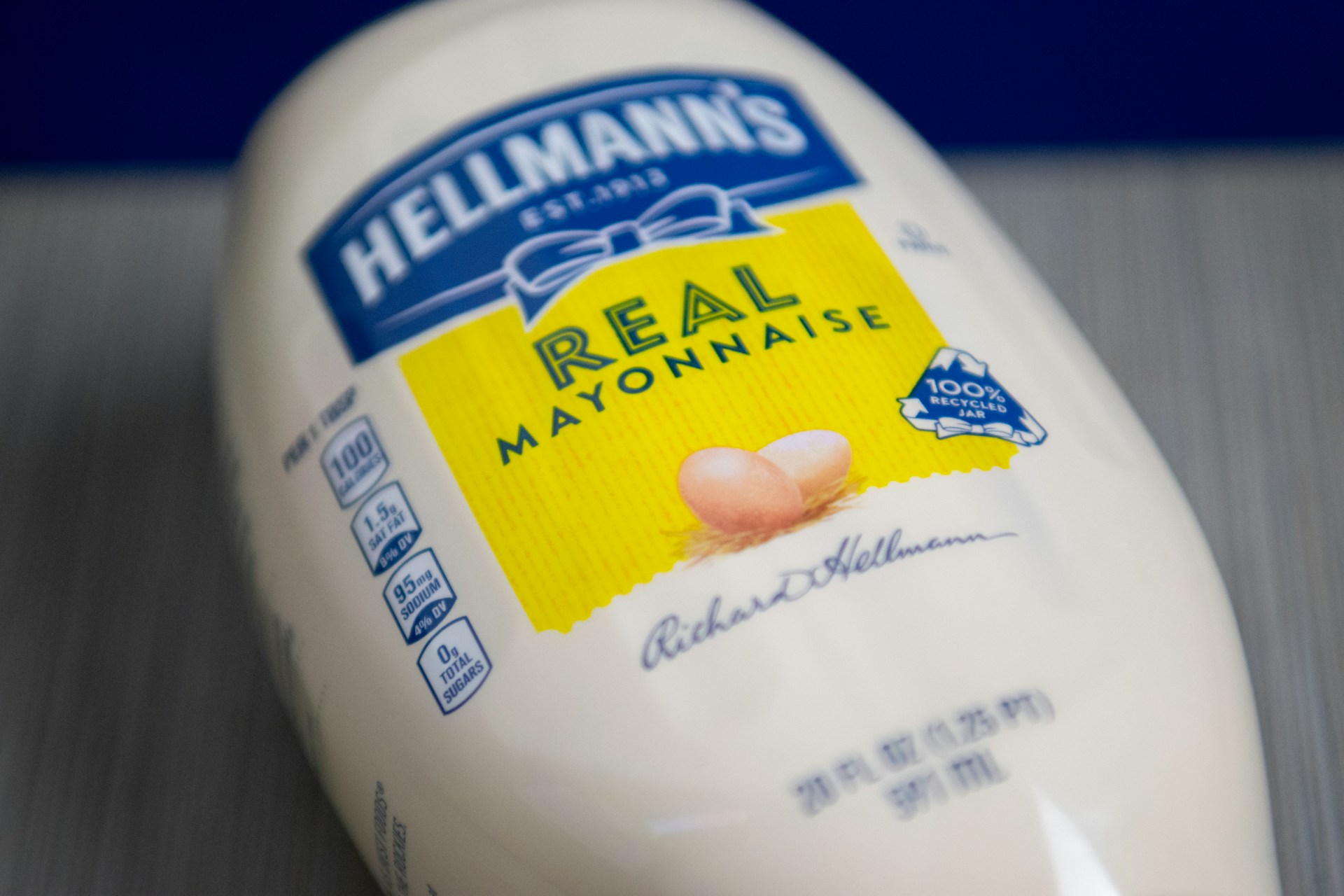
Most of us don’t think twice before spreading mayo on a sandwich or mixing it into a salad — but few realize how quickly it can turn risky once opened. Despite its creamy texture and long shelf life when sealed, mayonnaise expiration is no joke. Once air hits the jar, the clock starts ticking toward potential spoilage and bacterial growth. Because mayo is often used in foods that sit out — like potato salad or deviled eggs — even a slightly old batch can become a health hazard. Knowing when to toss it could save you from an unpleasant (and potentially dangerous) stomach issue.
The Real Shelf Life of Opened Mayonnaise
According to the USDA, commercial mayo should be used within two months after opening if it’s been stored in the refrigerator. This may surprise people who keep their jar for half a year or more. While the vinegar and lemon juice in mayo slow bacterial growth, they don’t stop it entirely. After two months, changes in flavor, texture, and safety start to occur — even if it looks fine. If you’ve had that jar since last summer’s barbecue, it’s time to check the mayonnaise expiration date and toss it.
Temperature Plays a Huge Role
Mayo safety depends heavily on proper storage. The mayonnaise expiration timeline shortens drastically if the jar is left out at room temperature for long periods. A single afternoon on the counter can allow harmful bacteria like Salmonella or Listeria to thrive. Always refrigerate mayo immediately after use and keep the lid tightly sealed. For best results, store it in the main section of the fridge, not the door, where temperature fluctuations are more common.
Homemade Mayo Has a Much Shorter Life
If you’re making your own mayo, the rules change completely. Homemade versions lack the preservatives that extend mayonnaise expiration in store-bought brands. Fresh mayo typically lasts no more than 3 to 4 days in the refrigerator before it starts to separate or spoil. Because raw eggs are often used, the risk of bacterial contamination is much higher. Always label homemade mayo with the date it was made — and when in doubt, throw it out.
Telltale Signs Your Mayo Has Gone Bad
Even if it’s within the suggested window, your mayo might already be turning. Watch for changes in color — any yellowing or browning is a red flag. A sour or “off” odor is another clear indicator that the mayonnaise expiration point has passed. You might also notice a watery layer on top or a grainy, curdled texture. These signs mean the emulsion has broken down and bacteria may already be growing, so it’s safest to discard it immediately.
Cross-Contamination Speeds Up Spoilage
Every time a knife or spoon that’s touched other food goes back into the jar, it introduces new bacteria. This is one of the fastest ways to shorten mayonnaise’s expiration and cause early spoilage. The simplest solution? Always use a clean utensil when scooping mayo. And never double-dip — one swipe through a sandwich and back into the jar is enough to contaminate the whole batch. Small habits like this make a big difference in keeping your food safe longer.
Expired Mayo Isn’t Just Gross — It’s Dangerous
While you might think old mayo just tastes bad, it can actually pose serious health risks. Consuming expired or improperly stored mayo can lead to foodborne illnesses like Salmonella or Staphylococcus aureus. Symptoms such as nausea, vomiting, diarrhea, and fever can appear within hours. The creamy consistency of mayo makes it the perfect breeding ground for bacteria once it warms up. Respecting mayonnaise expiration guidelines helps you avoid more than just bad flavor — it protects your health.
Stay Safe and Fresh With Simple Habits
Food safety experts say that prevention is always easier than recovery. Following proper mayonnaise expiration guidelines — like storing it cold, sealing it tight, and tossing it on time — keeps your kitchen safer and your meals fresher. You don’t have to give up your favorite creamy condiment; just treat it with the same caution as any perishable food. When in doubt, remember this rule of thumb: if you can’t remember when you opened it, it’s already too old. A fresh jar of mayo is far cheaper than a trip to urgent care.
How long do you usually keep a jar of mayo before tossing it? Have you ever noticed strange changes in texture or smell? Share your thoughts in the comments below!
You May Also Like
- What Brand Of Mayonnaise Is Actually The Best?
- 10 Store-Bought Sauces That Taste Exactly Like Their Famous Restaurant Versions
- 12 Condiments and Sauces You’re Storing Incorrectly
- These 8 Popular Sauces Rarely Last Long Once Football Season Kicks Off
- The 14 Best Hot Sauces, Ranked According to Consumers
The post Your Mayo Might Be Dangerous If It’s Been Open This Long appeared first on Grocery Coupon Guide.







